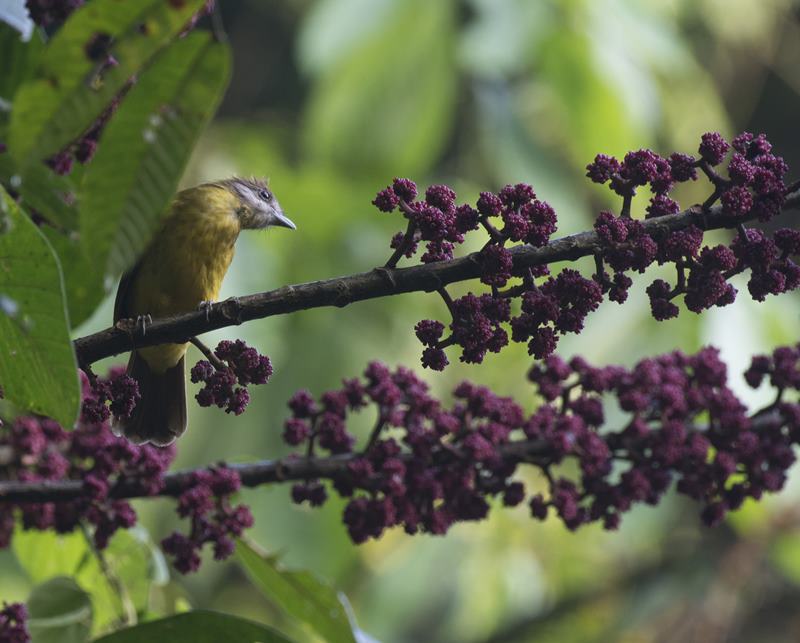Showcasing interdependence between birds and seed dispersal, study raises alarm over India’s last remaining rainforests
The findings from the study highlight the conservation value of northeast India’s last remaining lowland rainforest fragments and the diverse sets of plant–seed disperser interactions they harbour. Details here.


The authors documented 238 interactions between 63 fruiting plant and 44 frugivorous bird species across all sites. All photos by Abir Jain
By showcasing the vital interactions between plants and fruit-eating (frugivorous) birds, a study conducted on the rainforests in India’s northeast highlights the importance of the country’s last remaining rainforests and suggests measures to preserve the rich ecosystems functioning in these forests.
Published on June 26 in Biotropica journal, this is among the first studies from the Asian tropics to study the impact of forest fragmentation on plants and frugivorous birds. The study was conducted between January and April 2019 by a team of scientists from the Dehradun-based Wildlife Institute of India and the Bengaluru-based Nature Conservation Foundation.
“At the scale at which forests are shrinking, it is crucial to find out how ecological interactions like the ones between plants and seed-dispersing birds are altered because of fragmentation,” Abir Jain, the lead author of the study is quoted as saying.

“This study looked at the differences in the plant and frugivorous bird communities between forest fragments and contiguous forest and we found that fragments harbour diverse sets of interactions”, he added.
The authors documented 238 interactions between 63 fruiting plant and 44 frugivorous bird species across all sites.
“The findings from this study highlight the conservation value of north-east India’s last remaining lowland rainforest fragments and the diverse sets of plant–seed disperser interactions they harbour,” the study mentions.
“Remnant fragments can act as ‘stepping stones’ for preserving regional biodiversity and facilitate connectivity between fragments and contiguous forests for wide-ranging species to move across the fragmented landscape,” it added.
Warning signs
The study noted that while certain areas in the landscape are better protected, the future of many rainforest fragments in this region maybe perilous.
“Administering improved protection and active ecological restoration by planting native fruiting plants in degraded fragments with the support of local communities must be carried out to preserve these fragments and the biodiversity they represent,” co-author GS Rawat, former dean and scientist from Wildlife Institute of India stated.

Seed dispersal by frugivorous birds and fragmentation
The findings of the study conclude that upto 90 per cent of plants in tropical forests could be dependent on animals for the dispersal of their seeds.
“For this reason, frugivorous birds are particularly referred to as the gardeners of the forests. While birds benefit from the nutrition they get from the fruit pulp, plants benefit as birds carry their seeds away from the mother plant before dispersing them. For some species, the treatment that seeds receive in the guts of animals enhances their ability to germinate,” it stated.
Escape of seeds away from the mother plant is important as otherwise, they are prone to attack by pathogens like fungi, insect larvae, and seed-eating mammals like rats. Such mutually benefiting interactions between plants and frugivorous birds facilitate the regeneration of plants, maintain biodiversity, and ensure good health of the forests, the study mentioned.
“Unfortunately, tropical forests of Asia experience among the highest rates of forest loss and habitat fragmentation in the world. The Upper Brahmaputra Valley in eastern Assam, north-east India is characterised by remarkable biodiversity and had contiguous tracts of lowland tropical evergreen forests,” the study stated.
“Consequently, the remnant forests occur as a mosaic of isolated fragments of varying sizes, protected as Reserve Forests and Wildlife Sanctuaries that continue to face anthropogenic threats and associated degradation,” it warned.

